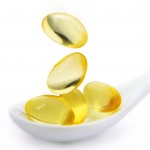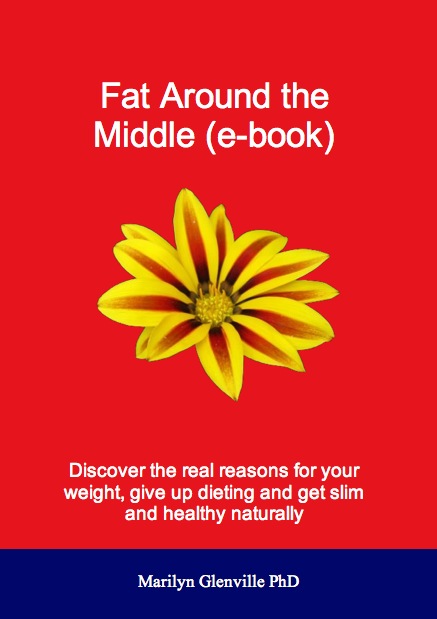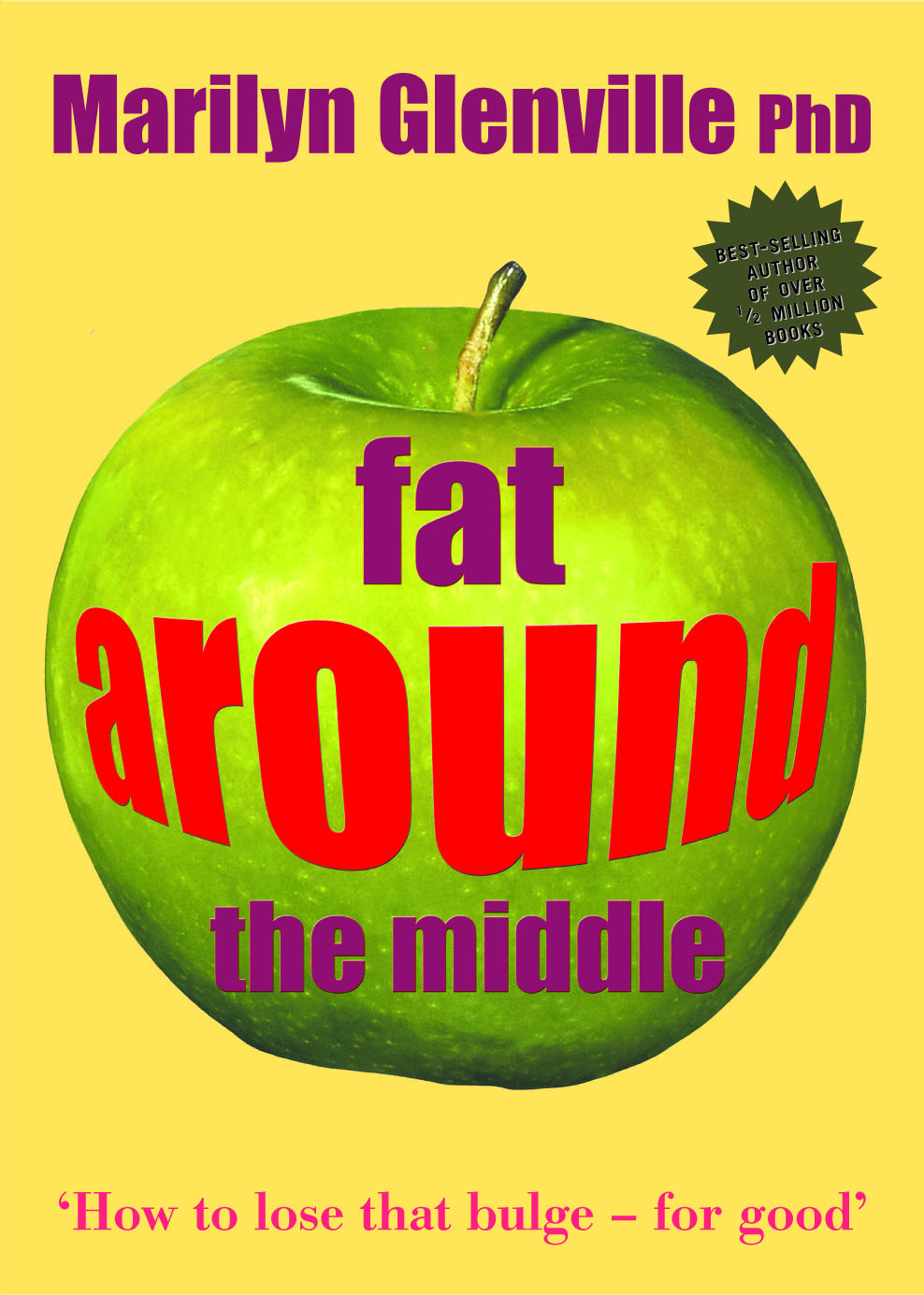How to Lose that Belly

How?
The aim is to change your body’s underlying biochemistry so that it gets the message that it is OK to let go of the fat it is choosing to store around the middle of your body.
What’s the cause?
The main reason some people gather more fat around their middle than others is specifically because of the action of the stress hormone cortisol. Millions of years ago, our bodies were designed to react quickly to danger. Like wild animals we were on constant alert so we could run or fight if threatened. When your brain thinks your life is in danger it stimulates the release of adrenaline and cortisol. This fight or flight response is incredibly clever and thoroughly efficient. It provides instant energy for 5-10 minutes allowing you to react swiftly to dangerous situations. These days, many of us live under chronic stress. But our bodies can’t distinguish between late trains, missed appointments, spiralling debt, infuriating work colleagues, family disputes and the truly life-threatening stress it gears up to challenge. So it reacts exactly the same as it’s always done. The problem with many modern lifestyles is that stress (our ‘perceived threat’) is almost continuous and comes without the natural release that either fighting or fleeing might provide. Unless you do something physical (as your body is expecting you to) all that extra energy, in the form of fat and glucose, has nowhere to go. It must be simply re-deposited as fat.
Food cravings you can’t control
After a stressful event cortisol levels in the blood often remain high for a while, effectively increasing your appetite because your body thinks you should refuel after all this fighting or fleeing. This means people under constant stress quite often feel constantly hungry. Worse, their body urges them to stock up on the foods it thinks will be most useful after all that ‘activity’ – carbohydrates (like sugar) and fats. It’s just the sort high-sugar, high-fat comfort and convenience food many people crave.
The fat around the middle connection
If you don’t fight or flee when your body expects you to, the fat and glucose swimming around your system get deposited as fat – around the middle of your body. And if you eat something sugary or fatty as a consequence of the post-stress appetite surge, any weight you gain as a result, will be around your middle too. The reason fat targets the middle is because it is close to the liver where it can most quickly be converted back into energy if needed. There it provides the body with protection ready for the next stress attack. Your body is only trying to help. To continue providing the energy it thinks you need, it tries to keep a convenient fat store ready for constant use and creates cravings and increases appetite to ensure good supplies of necessary fuel.
Are you stressed?
If you can see yourself in the list below, your cortisol levels are likely to be high:
- A tendency to gain fat around your tummy
- Increased appetite
- Increased cravings for chocolate, sweets, breads, cakes, caffeine and alcohol (particularly any combination of carbohydrates and fats, such as chocolate and cakes because they are particularly high in calories)
- Your immune system is low (you get frequent colds and infections)
- Headaches
- Nail biting
- Teeth grinding
- High cholesterol (if you don’t know, get it checked)
- Blood sugar swings
- Digestive problems (such as bloating and flatulence)
- Chest pains – (you must see your doctor if you are getting chest pains but the effects of the stress hormones can mimic heart problems)
- Muscle aches and pains
- Shoulder and neck pain (stress hormones will keep certain muscles tense ready for fight or flight)
- Hair loss
- Irregular periods or no periods
- Difficulty in concentrating or forgetfulness
- Depression
- Increased premenstrual symptoms (PMS)
- Slower metabolism (which makes it harder to lose weight in general)
- Low sex drive
- Tiredness but an inability to sleep well
- Tendency to get a second wind in the evening
- Waking up in the middle of the night, finding it hard to get back to sleep and then desperately want to continue sleeping in the morning when you should be getting up.
Do you have a problem?
For the purposes of measuring fat around the middle, BMI (body mass index) isn’t the best test, nor is a measure of body fat percentage. The best test is the difference in size between your waist and your hips (your ‘waist to hip ratio’). This is the true measure of fat around the middle and the best indicator of whether or not you are going to be vulnerable to all the health risks associated with it. Just get a tape measure and compare your waist measurement (at the narrowest point) with your hip measurement (at the widest point). Divide your waist figure by your hip figure to get what is known as your waist–hip ratio. For example: 86cm (34in) waist divided by 94cm (37in) hip = 0.9 If your calculation gives a figure greater than 0.8 you are officially apple shaped and you need to take action. For men the danger zone is above 0.95.
Menopausal?
If you are going into the menopause, your body will be extremely reluctant to let go of the fat around your middle. This is because fat is a manufacturing plant for oestrogen which will help protect your bones from osteoporosis. It’s a very clever system, designed to protect you, but it helps explain why mere diet and exercise alone will rarely shift that stubborn fat. The combined effect of female hormonal changes, slower metabolism and stress with high cortisol levels create a bigger likelihood of fat around the middle.
Why tummy fat is bad for you
Not all fat in the body behaves the same. Fat around the middle of the body that is the most likely to have a mind of its own. This “toxic fat” is far more metabolically active than fat elsewhere because it increases the risk of heart disease, high blood pressure, stroke, cancer and diabetes. One of the biggest problems it causes is insulin resistance.
Insulin resistance
When blood sugar increases (a result of the stress response or from what you have eaten), your body releases insulin to help move the glucose out of your blood and into the cells to actually provide them with energy. But if you don’t need that energy (you don’t fight or flee) the default mechanism is to store the glucose as fat. If the stress continues (it usually does) cortisol levels remain high, so the body triggers the breakdown of sugar stores in the liver and muscles to provide further fuel. Out comes more insulin to deal with the extra blood glucose. Overtime, the body simply can’t respond to insulin the same way it used to. You can become intolerant to insulin – or insulin resistant.
What Are Your Choices?

I have devised a four pronged approach to getting rid of this dangerous and unsightly fat. It comprises simple changes to the way you:
1. Eat
2. Take supplements
3. Approach stress
4. Take exercise If you follow my recommendations closely for three months I am convinced you will see a significant change to your body shape, and as a consequence, will dramatically improve your long term health.
Eating healthily – NOT dieting!
There is a chance that your pattern of eating is subconsciously telling your body that it is under stress. If you restrict your diet or cut calories your body inevitably thinks there is a famine out there and that causes stress. It will slow down your metabolism to hold on to your precious fat stores. Furthermore, if your blood sugar levels fluctuate (as they do for most women), your body will be releasing adrenaline which is the same hormone it releases when you are under stress. Once more it encourages your body to store fat. The solution is to find a way of eating that tells your body all is well –and reassure it that is not under stress.
The 3-month eating plan
Aim to stick to the eating plan 80% of the time and allow yourself a 20% off for good behaviour (and human fallibilities!) and don’t talk about ‘good’ and ‘bad’ foods (it induces guilt). Instead try to think of foods as junk (unhealthy) and healthy foods.
Try to stick to these simple rules:
1) Stop dieting
Stop dieting (yes, really!) and don’t count calories, otherwise your body will think there’s a famine and raises stress levels (which contribute to fat storage) If you miss breakfast completely your body immediately registers famine and hangs on tight to your ample stores of fat.
2) Eat little and often
Try to keep your blood sugar levels and energy levels stable by eating something every three hours. Just eat breakfast, lunch and dinner plus a snack mid morning and one mid afternoon, with no longer than three hours between. Oh, and try not to eat carbohydrates after 6pm.This will stop those roller-coaster highs and cravings for sweet foods. Because your blood sugar isn’t allowed to drop, your body will no longer have to ask you for a quick fix. As the blood sugar steadies, so will the mood swings. As your cortisol levels reduce you will automatically start to happier and calmer inside.
3) Don’t skip breakfast
If you miss breakfast completely your body immediately registers famine and hangs on tight to your ample stores of fat.
4) Eliminate all sugar and refined carbohydrates
Avoid any foods that make your blood sugar rise quickly because as blood sugar drops again your body releases adrenaline and cortisol to stabilise it once more. Swap to whole grain alternatives.
5) Add protein to each meal
Protein slows down the rate the stomach processes food and slows the passage of the carbohydrates with it. As soon as you add a protein (be it animal or vegetable) to a carbohydrate you change it into a slower releasing carbohydrate, which is a very good thing.Protein helps in the control of insulin because it slows the rate of digestion. It also encourages the production of glucagon which works in the opposite way to insulin, increasing blood glucose by encouraging the body to burn fat for energy.
6) Eat essential fats
A lifelong dependency on low fat diets might mean you’re consuming less saturated fat, but most people today have unwittingly made themselves deficient in the good fats – essential fatty acids. As the name implies these essential fatty acids (EFAs) are essential and you can only get them from your diet. Your body cannot manufacture them so you have to eat them. Essential fats are so important as that they help you in a number of ways:
- They slow down the rate at which the stomach empties, so making carbohydrates even more slow-releasing
- They boost your metabolism
- They make you less insulin resistant
- They reduce inflammation
7) Don’t eat on the run
It gives your body the message that time is scarce, you are under pressure and stressed. Furthermore, your digestive system will be less efficient. Make a point of sitting down and eating your food as calmly as possible.
8) Watch what you drink
Cut out all caffeine and sugary drinks and significantly reduce alcohol intake (cut it out completely for a month if you can).
9) Change the way you think about food
If you’re really serious about changing your body shape you need to think about food and eating as a way of life so that healthy, enjoyable eating becomes a habit, something you do everyday without even thinking about it, just like cleaning your teeth. (For a much more detailed breakdown of an altogether healthier way to eat, you should read my book Fat Around the Middle, or the Understanding Fat Around the Middle e-book at the Natural Health Practice)
Supplements

A number of chemical reactions are involved in turning glucose into energy instead of fat. These are controlled by enzymes, which are themselves dependant on certain vitamins and minerals in the body. If someone is deficient in these nutrients, the body will find it harder to let go of that weight around the middle.
Chromium One of the most important minerals for losing that apple shape is chromium. This mineral is needed for the metabolism of sugar. It helps insulin take glucose into the cells. Without chromium, insulin is less effective at controlling blood sugar levels and glucose levels rise.
Magnesium Known as ‘nature’s tranquilliser, magnesium calms the adrenal glands and helps balance blood sugar by contributing to the production and action of insulin. Zinc Zinc is an extremely important mineral, as it is needed for the production of stress hormones, insulin and sex hormones. Research has shown that supplementing with zinc helps control cortisol.
Vitamin C We know that vitamin C is involved with glucose metabolism and that according to the Centre for Disease Control and Prevention in the US; people with diabetes have significantly lower concentrations of vitamin C, up to 30% lower. Vitamin C is crucial for adrenal gland function. The more cortisol is made, the more vitamin C is used. Research has shown that people who have good levels of vitamin C burn 30% more fat when they exercise.
B vitamins The B vitamins are known as the ‘stress’ vitamins and are important to take when working on nourishing and calming the adrenal function. B vitamins also have an effect on blood sugar balance because they are needed for glucose metabolism.
Co-enzyme Q10 This vitamin-like substance is important for energy production and normal carbohydrate metabolism. Co-enzyme Q10 helps shift fat around the middle because it releases energy by burning that fat. Co-enzyme Q10 also has a role in controlling blood sugar levels and helps to lower glucose and insulin, so improving insulin resistance.
Alpha Lipoic acid Alpha lipoic acid is a powerful antioxidant that is made by the body and is a co-factor in vital energy-producing reactions. Its role is to release energy by burning glucose. The more glucose is burned, the less insulin the body has to release and so the body stores less fat. Alpha lipoic helps makes tissues more sensitive to insulin so that insulin can do its job of moving glucose into the cells and not storing it as fat.
Amino Acids Amino acids are the building blocks of protein and a number are vital to losing fat around the middle because they can help to make cells more sensitive to insulin while others are important to help cushion the body against the effect of the stress hormones. The most important ones are: N-acetyl cysteine, carnitine, tyrosine, arginine, glutamine, leucine, isoleucine and valine.
Herbs

Tests

Mineral Deficiency Test with Supplement Programme (hair)
Find out what the mineral and heavy toxic levels are in your body
This test measures the deficiencies and excess levels of 12 different minerals (including calcium, chromium, cobalt, copper, iron, magnesium, manganese, phosphorus, potassium, selenium, sodium and zinc) and 6 heavy toxic metals (including aluminium, arsenic, cadmium, lead, mercury and nickel) that may be present in your body.
Find out more – Mineral Deficiency Test with Supplement Programme (hair)
Omega 3 Deficiency Test (at home finger prick blood)
If you want to find out if you are getting enough Omega 3 fatty acids from your diet and whether you have the correct balance of essential fatty acids.
Signs of an Omega 3 fatty acid are dry skin, lifeless hair, cracked nails, fatigue, depression, dry eyes, lack of motivation, aching joints, difficulty in losing weight, forgetfulness, breast pain. If you have also tried to lose weight by going on a low-fat or no-fat diet, you are likely to be deficient in these essential fats. It is now estimated that we are getting ten times more Omega 6 fats from our diet than Omega 3 and over the last century there has been an 80% decrease in the consumption of these Omega 3 fatty acids. When you eat Omega 3 fats they are converted to substances that have an anti-inflammatory effect on the body.
Many of the women I see in the clinic have been taking evening primrose oil supplements – an Omega 6 fatty acid – for many years as it can be helpful with PMS. But you can end up with too much Omega 6 and not enough Omega 3 in your body. Some women are also taking combinations such as Omega 3, 6, and 9 in supplement form because they have heard that we need a good balance of all the Omega fatty acids. This is true, but you have to take into account what your own levels may be in the first place. It is no good adding in more Omega 6 if you have already got enough or in fact too much in your body. (You can now have a blood test to tell you if you have the correct levels of Omega 3 to Omega 6 in your body see below).
To check whether you have sufficient levels of Omega 3 please click Omega 3 Deficiency Test (at home finger prick blood)
How stressed are you?
The test measures the level of the stress hormone cortisol which is released when you feel physical or psychological stress. Symptoms can occur if you are producing too much or little cortisol. The test also measures DHEA (dehydroepiandrosterone), which is the hormone that works to balance many of the negative effects of cortisol and helps you cope with stress. Four saliva samples are collected in a kit, supplied by the lab, at home over the course of one day and the samples are then sent back to the lab for analysis.
Find out more – Adrenal Stress Test (saliva)
Metabolic Syndrome (Insulin Resistance) Test (blood)
Are you insulin resistant?
Insulin is a powerful hormone secreted by the pancreas in order to control the way the body stores and uses carbohydrates (sugars), fats and protein. When we eat refined or sugary foods our blood sugar level rises quickly. In response to this dangerous situation, our pancreas releases insulin to take the sugar out of the blood and store it in our cells.
If the body is continuously exposed to high levels of insulin, as it is if we regularly consume sugary or refined foods, the insulin receptor cells of the body become inefficient and resistant to the effects of insulin, leaving blood sugar levels high. Recognising that blood sugar levels are still high, the pancreas produces even more insulin to compensate. You therefore have a situation of high blood sugar and high insulin levels, both of which are dangerous to your health.
This is a fasting blood test which measures your insulin level and it also measures cholesterol, HDL (‘good’ cholesterol) LDL(‘bad’ cholesterol), high sensitivity C-reactive protein (a marker of inflammation) and glycosolated haemoglobin (HbA1c) which measures your average blood glucose level over two or three months.
Find out more – Metabolic Syndrome (Insulin Resistance) Test (blood)
Food Allergy/Intolerance Test (blood)
Do you have an allergy/intolerance?
Find out with this simple test. This test will help you find out what foods you may be allergic to or reacting to, which may cause weight gain, bloating, fatigue and let you know what foods you should avoid eating. The test measures your reactions to 120 different foods (including fish, meat, poultry, egg, dairy, vegetables, fruits, nuts, seeds and grains), seasonings, colourings, additives and drinks from one single blood sample which can be taken by your practice nurse or doctor. It also gives you a measure of your IgE which is an indication of an acute allergic response.
Find out more – Food Allergy/Intolerance Test (blood)
After three months you would then have a re-test in order to monitor your progress and adjust your supplement programme according to your new condition.
If you need help in obtaining any of the supplements, herbs or tests mentioned above, click, Fat Around the Middle options at The Natural Health Practice. They can supply all of them for you online or if you prefer to talk to somebody first you can also order by mail order on the telephone. The products supplied by this company are always of the highest quality.
Plan of Action
Nutrition
Ensure you are getting the right nutrition. Follow the dietary recommendations outlined in the free The Foundation of Health ebook For more information on the special dietary recommendations for Fat Around the Middle, read the rest of the Understanding Fat Around the Middle ebook at The Natural Health Practice
Supplements
The supplement programme below should be taken for at least three months in order to achieve best results
Nutrients & amounts
| Chromium | 200μg | Zinc | 15mg |
| Co-Enzyme Q10 | 25mg | Omega 3 fish oils | 770mg EPA & 510mg DHA |
| Magnesium Citrate | 300mg (40mg elemental) | B Complex | 25mg |
| Vitamin E | 200mg | Amino Acids | Carnitine 200mg, tyrosine 200mg, arginine 200mg , n-acetyl cysteine 500mg |
| Green Tea Extract | 50mg | Vitamin C with bioflavonoids | 500mg (twice a day) as magnesium ascorbate |
| Alpha Lipoic Acid | 100mg |
To avoid having to purchase numerous supplements for all of the above and to make the process easier, I have put together a supplement programme which contains all the nutrients mentioned above and in the correct dosages. For more information about these click Fat Around the Middle Supplement Programme. In my book ‘Fat around the Middle’ I explain the impact of nutrition on fat around the middle and also give in great detail a list of the most important nutrients and herbs required in order to help you. If you would like to order these special supplements now, you can do so through the Natural Health Practice by clicking Fat around the Middle Supplements at the Natural Health Practice.
Go for it!
Changing the way you eat, adding supplements and an exercise regime AND trying to cut back on the stress in your life isn’t going to seem easy for the first few weeks. The four-point-plan is going to represent quite a significant life change for many of you. But please do persevere. In less than a month you will start to notice a few changes. The fat at the top of your belly often goes first, then lower down, then across your back. And before you know it, your clothes will start to feel lose. (For tips on how to control stress and to know which exercise gets rid of belly fat faster then see my book Fat around the Middle.)
This is, after all, only a three month programme. It’s not a life sentence as dieting might be (or might already have been). I’m willing to bet that once you reach your goal, once you’ve got your old figure and old spirit back, you’ll want to keep up with a few of the changes. Scientists say it takes 10 days to break a habit. So after three months some of these changes will be so much a part of your life you’ll want to stay with them forever.
HerbsA good herbal formula should contain: |
Herbs & amounts
|
||
| At the end of three months you should reassess your condition and adjust your supplement programme accordingly. | |||
Tests
There are a number of tests which I think are very useful in the treatment of fat around the middle.
Mineral Deficiency Test with Supplement Programme (hair)
Omega 3 Deficiency Test (at home finger prick blood)
Metabolic Syndrome (Insulin Resistance) Test (blood)
Food Allergy/Intolerance Test (blood)
After three months you would then have a re-test in order to monitor your progress and adjust your supplement programme according to your new condition.
If you need help in obtaining any of the supplements, herbs or tests mentioned above, click, Fat around the Middle options at The Natural Health Practice. They can supply all of them for you online or if you prefer to talk to somebody first you can also order by mail order on the telephone. The products supplied by this company are always of the highest quality.
Read More

The section above forms part of a larger ebook on Fat around the Middle.At the end of the ebook is a practical step by step summary of what you can do to help yourself.
If you would like to read the rest of this ebook click, Understanding Fat Around the Middle ebook at The Natural Health Practice and you will be given details of how you can download the whole ebook.

The contents of this site are for information only and are intended to assist readers in identifying symptoms and conditions they may be experiencing. This site is not intended to be a substitute for taking proper medical advice and should not be relied upon in this way. Always consult a qualified doctor or health practitioner, especially if you are pregnant, taking the pill or on any medication. Your situation will need to be looked at individually and you should not attempt to self treat. The author and publisher cannot accept responsibility for illness arising out of the failure to seek medical advice from a doctor. The views expressed by third parties placing material on these pages are not representative of the views of the author or publisher. The Author and Publisher cannot monitor the content not produced by us and has not reviewed all the third party material published on this site and the Author and Publisher accept no liability whatsoever in relation to the content of third party material placed on these pages.

